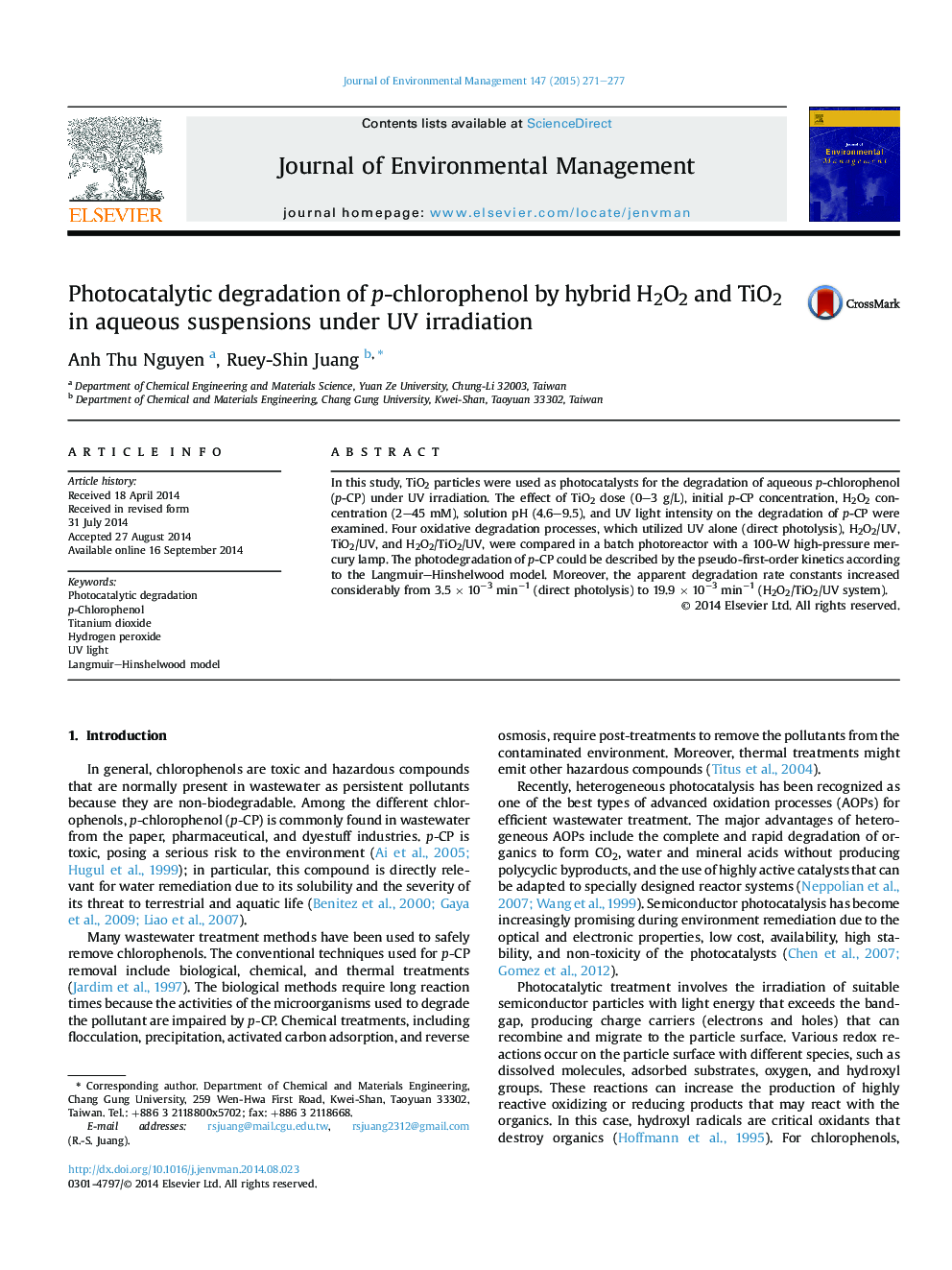| Article ID | Journal | Published Year | Pages | File Type |
|---|---|---|---|---|
| 1055669 | Journal of Environmental Management | 2015 | 7 Pages |
•The hybrid H2O2/TiO2/UV process could enhance photodegradation of p-chlorophenol.•Photodegradation of p-chlorophenol under UV irradiation well followed the L–H model.•The apparent rate constant nearly double increases compared to the absence of H2O2.•TiO2 dose should be optimized before selection of other variables in photocatalysis.
In this study, TiO2 particles were used as photocatalysts for the degradation of aqueous p-chlorophenol (p-CP) under UV irradiation. The effect of TiO2 dose (0–3 g/L), initial p-CP concentration, H2O2 concentration (2–45 mM), solution pH (4.6–9.5), and UV light intensity on the degradation of p-CP were examined. Four oxidative degradation processes, which utilized UV alone (direct photolysis), H2O2/UV, TiO2/UV, and H2O2/TiO2/UV, were compared in a batch photoreactor with a 100-W high-pressure mercury lamp. The photodegradation of p-CP could be described by the pseudo-first-order kinetics according to the Langmuir–Hinshelwood model. Moreover, the apparent degradation rate constants increased considerably from 3.5 × 10−3 min−1 (direct photolysis) to 19.9 × 10−3 min−1 (H2O2/TiO2/UV system).
